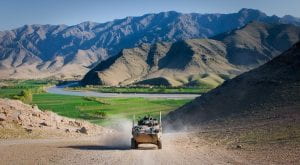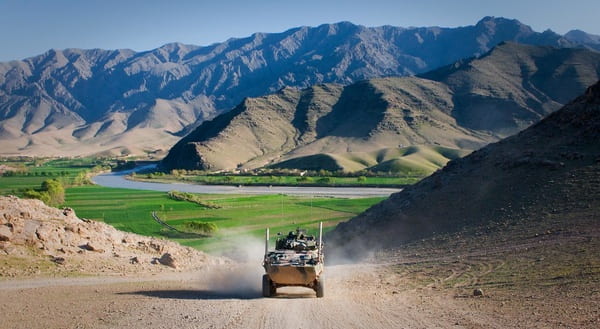Written by Courtney Andrews and Faiza Mawani

Twenty years after the events of September 11, 2001, and the subsequent war on terrorism, the United States military has ended its operations in Afghanistan. The country, ravaged by war and too fragile to stand on its own, was immediately overtaken by the very forces the U.S. sought to defeat. After two decades, three administrations, and 170,000 American lives lost, the U.S. is leaving Afghanistan in much the same shape as it was found.
What is to become of Afghanistan and what toll will the inevitable economic and humanitarian crisis take on its people, many of whom do not know where their next meal will come from? What will happen to a generation of women and girls whose education and employment are now at stake and whose rights are tenuous under the new/old regime? What will happen to the millions of children under five that are expected to become acutely malnourished in the next year? What will happen to those that managed to escape – will they find safe refuge in neighboring countries, or will they suffer the plight of many refugees and displaced peoples around the world? All remains to be seen, but at this point, the outlook is dire. Here we provide a brief history of Afghanistan over the past century and consider what lies ahead for the struggling nation.
Afghanistan: A Retrospective
Afghanistan is located centrally in southeast Asia and shares a border with Iran, Pakistan, Tajikistan, Uzbekistan, and Turkmenistan. It is home to at least 14 distinct ethnolinguistic groups, and the mountainous terrain has kept these clans separate and made it difficult for a central government to take hold. The strategic location of the country, however, has made it very enticing to those seeking to procure a hold on southeast Asia. After a period of relative stability after its independence from colonial rule in 1921, the country has been plagued by invasion and power struggles since the 1970s.
In 1953, the pro-Soviet General Mohammad Daoud Khan became prime minister of Afghanistan, and in 1956, Soviet leader Nikita Khrushchev agreed to help Khan establish economic and military ties. At this time, women were granted a more public presence and were allowed to attend university and join the workforce. In 1973, Khan abolished the monarchy and replaced it with The Republic of Afghanistan, naming himself president and keeping close ties with the USSR. While creating his new government, Khan proposed a new constitution in which women were granted more rights, and the country set out on a path to modernization. This did not sit well with local clan members who believed in a strict interpretation of the Qur’an, the holy book of Islam. Tensions rose under the surface until they eventually boiled over.
In 1978, an armed revolt broke out in the countryside, led by conservative Islamist and ethnic leaders who were protesting social changes Khan was trying to implement. This group became known as the mujahideen, or “holy warriors.” Backed by the United States, the mujahideen killed Khan, and a full-scale war broke out from 1979 to 1989: communists versus mujahideen. This being the height of the Cold War, the US continued to provide weapons and tactics to the rebels in order to defeat the Soviets.
Around 1988, Saudi Islamist Osama bin Laden founded the group al-Qaida (“the base”). Though the US had backed the mujahideen in defeating the Soviets, bin Laden argued that the US stood as the primary obstacle to the establishment of a truly Islamist state. By 1995, a newly formed Islamist militia, the Taliban, rose to power, promising peace to the war-torn people of Afghanistan. Calling themselves “students of Islamic knowledge,” the Taliban imposed strict sharia law, stripping women and girls of their basic human rights and instituting public floggings and amputations of those who broke the law.

The War
September 11, 2001: Al-Qaeda operatives hijack four commercial airliners and crash them into the Twin Towers in New York City and the Pentagon in Washington, D.C. Close to 3,000 people die in the attacks, thousands more are injured, first responders are exposed to toxic fumes that will later be listed as the cause of cancer, and a nation that has never before been attacked on its own soil mourns an incomprehensible loss.
Most of the 9.11 hijackers originated from Saudi Arabia, none from Afghanistan, though the mastermind behind the attack, Osama bin Laden, was operating out of the country. The ruling authority in Afghanistan, the Taliban, was accused of harboring terrorists. In the coming weeks, George W. Bush’s “war on terrorism” provided the U.S. blanket authority to invade any country accused of sympathizing with or aiding Muslim extremists. On October 7, 2001, the U.S. military began a bombing campaign against Taliban forces in Afghanistan. Ground combat troops arrive two weeks later. Thus began what would become the longest war in U.S. history.
Both the Obama and the Trump administrations tried to leave Afghanistan, but the situation remained too precarious to do so safely. President Biden, convinced that there was never going to be a safe time to leave, was determined to put an end to the loss of American lives, especially in a situation of no measurable progress. “It’s time to end America’s longest war,” he declared. The remaining 3,500 troops in Afghanistan have been withdrawn despite the failure of intra-Afghan peace talks and the increase in Taliban attacks on Afghan security forces and citizens. The Taliban wasted no time storming the capital of Kabul, forcing president Ghani into exile, and reasserting its authority.
Biden says Washington will continue to assist Afghan security forces and support the peace process, but what does that mean? As the U.S. officially ends its military operations in Afghanistan with precious little to show for it, much is at stake for those who remain in the country, most notably women and children.
A Human Rights and Humanitarian Crisis
One of the central tenets of the Taliban’s ideology has been the opposition to girls’ and women’s education. It is predicted that around 1 million children will miss out on education due to increased attacks on schools and villages dramatically increasing in the past month since the Taliban has resumed control over Afghanistan. Rather than educate them, the Taliban have a history of enslaving women, increasing the risk of domestic violence, abuse, and exploitation, including forced child marriage. Many humanitarian agencies are concerned about an increase in violence against women during this time of crisis. In an apparent attempt to rebrand themselves as more moderate, the Taliban have made some statements alluding to protections for women, though some see this as an empty promise. The days of denying women the right to education and subjecting them to public floggings and mass executions seem part of a not-so-distant past.
The ensuing humanitarian crises is expected to affect nearly half of children in the country. Food stocks will soon run out, and a third of the country will not have access to basic goods and services. Afghanistan does not have sufficient funding in its international humanitarian response plan; as of August 2021, it is only 38 percent funded. This translates to approximately 1.2 million children losing protective services, leaving them vulnerable to violence, sexual exploitation, and forced early marriages, and about 1.4 million women left without a place of comprehensive support.
Displacement and a Refugee Crisis
Although President Biden did agree to allow Afghani people who worked with the US coalition to come to America with US troops, there were several tens of thousands that could not board the planes. Images of the Kabul airport being jam-packed with families awaiting airlift, along with videos of people handing their babies to American soldiersand absolute strangers for the sake of safety and refuge did circulate our social media pages the past few weeks. The outpouring of compassion did overwhelm the global community, but now that airlifts have ceased, about 39 million Afghans remain trapped in the humanitarian crisis that is yet to emerge in the country. According to the United Nations High Commissioner for Refugees (UNHCR), around 3.5 million people have already been displaced due to violence in Afghanistan. These people are fearful of returning to their homes, but they also lack the finances to survive.
Consequently, the people of Afghanistan will seek refuge in neighboring countries, where many of their fellow citizens already live. For four decades, Pakistan and Iran have hosted millions of Afghan refugees. But these countries are also not capable of doing this for too long due to their own lack of international humanitarian aid. The UNHCR has called on countries to leave their borders open and permit refugee status to the people of Afghanistan in order to evade any more human rights violations and to prevent a greater humanitarian crisis from emerging.
What Next?
In an article about the challenges that the Taliban now faces, Dan Bilefsky of the New York Times writes: “Will the Taliban engage the world with a more inclusive approach? Or will they return to the ways of the past?” So far, the Taliban have been cracking down on protests, rounding up known opponents, and violently suppressing the news media. Unfortunately, from a human rights perspective, it appears that the worst is yet to come.

